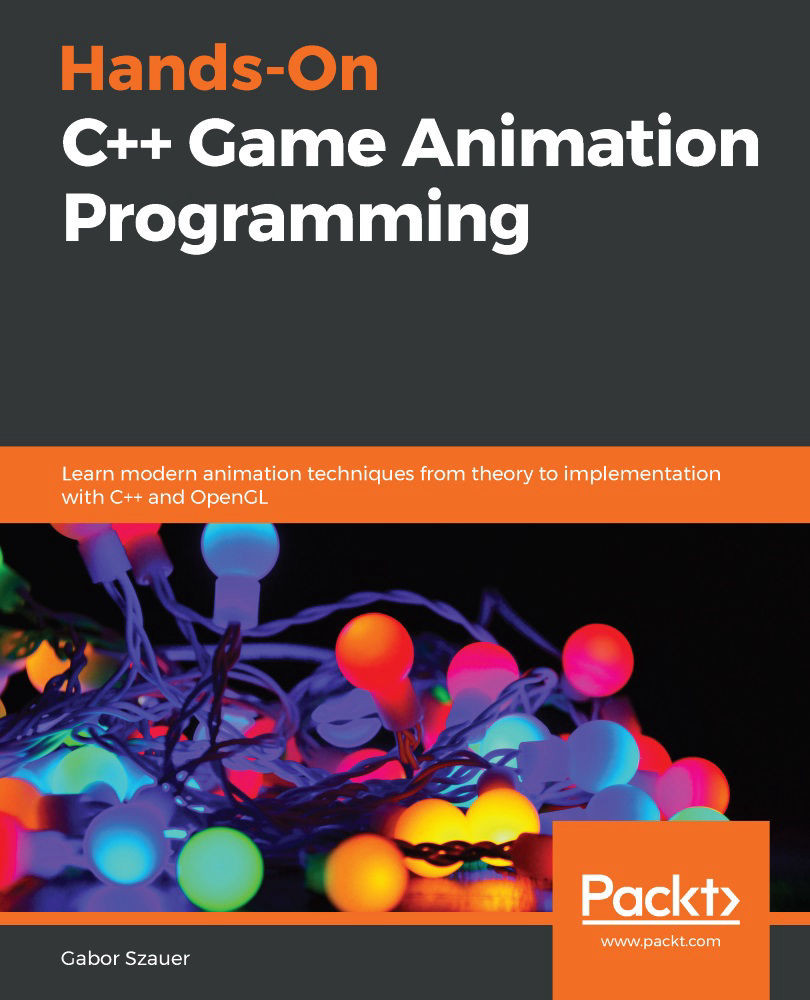glTF – loading the bind pose
You are now ready to load the bind pose from a glTF file, but there is a problem. glTF files don't store the bind pose. Instead, for each skin that a glTF file contains, it stores a matrix array that holds the inverse bind pose matrix for each joint that affects the skin.
Storing the inverse bind pose matrices like this is good for optimization, which will make more sense in the next chapter, but for now, it is something we have to deal with. So, how do you get the bind pose?
To get the bind pose, load the rest pose and convert each transform in the rest pose into a world space transform. This makes sure that if a skin didn't provide an inverse bind pose matrix for a joint, a good default value is available.
Next, loop through each skinned mesh in the .gltf file. For each skinned mesh, invert the inverse bind pose matrix of each joint. Inverting the inverse bind pose matrix results in the bind pose matrix. Convert the bind pose...







































































